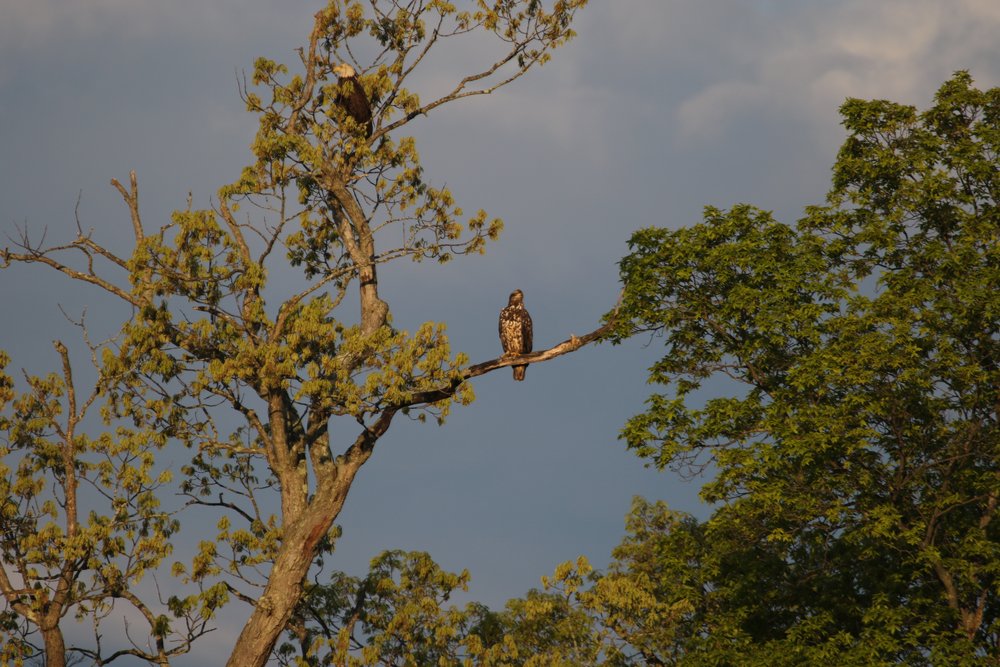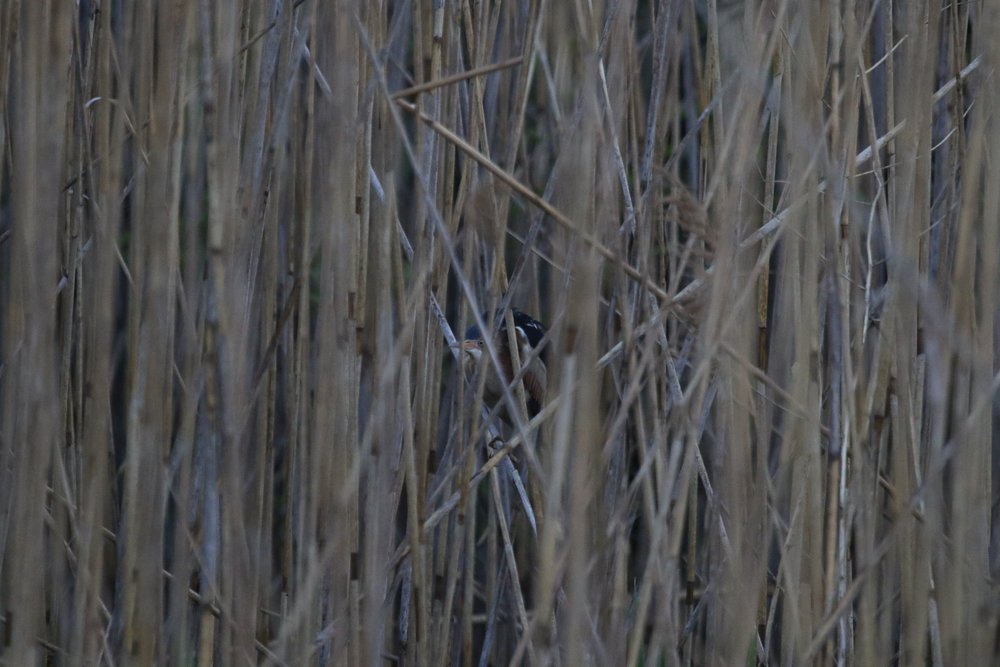
The beaver slapped its tail, a heavy thunk with purpose, and a ripple of laughter, nervous and surprised wafted through the group. “That gets the adrenalin going,” I said, though no one needed to add to the jangle of excitement. I’d brought coffee and banana nut muffins. “Susan, why didn’t you tell us you knew how to bake?” someone asked. “Because I can’t,” I said.
We were a cheerful bunch—seven students from my class on writing about birds at Bard College and three friends who were willing to get out of bed for a four in the morning bird event. We were out to hear the dawn chorus on Cruger Island Road, a muddy causeway that splits the North and South Tivoli Bays that edge the Hudson River.
I’ve been on Cruger Island for the dawn chorus many times; there is no place I’d rather hear the world wake up. An orange almost-full moon disappeared behind the Catskills as we stood in silence except for the hum of a barge on the Hudson in the distance. Students whispered to each other and one spotted a satellite coursing across the sky and I wondered: would this be a special morning, would they find it magic, as I did? Or might it be a dull dawn chorus, something they would regret rising so early for when they still had finals, papers to write.

And then the birds started, first a Catbird leading the charge, a Great-blue Heron flew over, a dark quiet silhouette, then a Marsh Wren tuned up. In the distance: Barred Owl, a Robin, Red-winged Blackbirds. It wasn’t until a Screech Owl arrived, landing in a tree but twenty feet away at 5:03 that I felt a ripple of pleasure, that collective sense that this was going to be a splendid day. By 5:30 one student was crouched looking into the reeds to spot a Least Bittern, and that was soon followed by a Common Nighthawk bat-winging through the cerulean sky. Four Bald Eagles contemplated the morning sun in nearby trees, one adult to three young, and a brown Raccoon made its way into the woods with a tasty treasure.

To take young people out to see this world we live in: I can’t imagine anything more important or fun. Every week I began class asking what they had seen and every week at least one or two would say: I saw nothing, trapped behind a computer, in the library, in a book. These are serious, hard-working kids. I saw that by teaching a class that required them to go out and look, to write about what they saw, gave them permission, encouragement to do what they don’t have time to do in this busy world.
I always get a little sentimental at the end of a semester, fond of my students, our lively and warm conversations, and because this class involved lots of time in the field I’ve gotten to know these young people. I like them. Admire them. And so, full of that sentimentality I can write that to look in the face of a young person who has heard his first Black-billed Cuckoo sing in a marsh, to stand next to a young woman following a Merlin zinging across a clear sky, full of hope and promise: this is to live this life, this is to love this life.